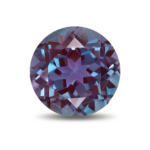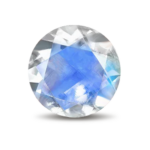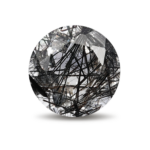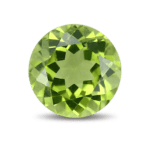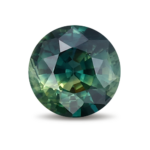About Lab Grown Diamond Rings
Lab-grown diamond rings replicate natural diamond formation in a lab, sharing identical traits with mined diamonds. Produced ethically through HPHT and CVD methods, they undergo the 4 Cs grading like natural diamonds, ensuring quality. This eco-friendly alternative addresses social and environmental concerns linked to traditional mining. Cost-effective and gaining popularity, lab-grown diamonds offer a sustainable choice for luxury jewelry, aligning with consumer preferences for ethical options.
Lab Grown Diamond Rings FAQ
Lab diamonds are an appealing choice for consumers due to their ethical, eco-friendly production that avoids traditional mining issues. More affordable than natural diamonds of similar quality, they offer better value. Identical in properties to natural diamonds, they are visually indistinguishable. With diverse options in size, cut, and design, lab diamonds cater to those seeking responsible, cost-effective, and high-quality alternatives in fine jewelry.
Lab diamonds are created through two main methods: High Pressure High Temperature (HPHT) and Chemical Vapor Deposition (CVD). HPHT replicates natural conditions by subjecting a small diamond seed to pressure and temperature, causing carbon to crystallize around it. In CVD, a hydrocarbon gas is heated, and carbon atoms are deposited onto a substrate, forming a diamond crystal layer with precise control. These methods, in a controlled environment, produce diamonds with identical properties to mined diamonds, mimicking the natural growth process.
Choosing between HPHT (High Pressure High Temperature) and CVD (Chemical Vapor Deposition) diamonds depends on preferences and applications:
HPHT Diamonds: Formed by subjecting a diamond seed to high pressure and temperature, they offer color consistency and suit specific industrial uses.
CVD Diamonds: Grow by depositing carbon atoms from gas onto a substrate, providing exceptional clarity and potential for larger, high-quality diamonds, often with distinct growth patterns.
Natural diamonds form over millions of years in the Earth’s mantle, driven by high pressure and high temperature. Lab-grown diamonds replicate these conditions using HPHT or CVD processes. Physically identical, their distinctions center on origin and environmental impact. Lab-grown diamonds, more ethical and sustainable, sidestep concerns tied to traditional mining. Affordable due to controlled production, their market acceptance rises as consumers seek luxury with an environmentally conscious approach.
No, moissanite is not a lab-grown diamond. Moissanite is a naturally occurring mineral composed of silicon carbide, while lab-grown diamonds are created in a laboratory setting through processes like High Pressure High Temperature (HPHT) or Chemical Vapor Deposition (CVD). Moissanite is often used as a diamond alternative due to its visual similarities, but it has a different chemical composition and is not a type of diamond.
Lab-grown diamonds are real diamonds with the same chemical composition as natural diamonds, while moissanite is a naturally occurring mineral composed of silicon carbide. Lab-grown diamonds share physical, chemical, and optical properties with mined diamonds, whereas moissanite has different properties. Moissanite has more fire (color flashes) than diamonds, making it visually distinctive. Both are popular alternatives to natural diamonds, each with its unique characteristics and price points.
Lab-created diamonds vary in price depending on factors like size, quality, and retailer. Generally, they can be 20-40% less expensive than natural diamonds. Small lab-created diamonds may start around $200 per carat, while larger, high-quality stones can cost several thousand dollars per carat.
The cost of a 1-carat lab-grown diamond can vary based on several factors, including its cut, color, clarity, and the manufacturing method used. Generally, lab-grown diamonds are more affordable than their natural counterparts. Prices for 1-carat lab-grown diamonds can range from a few hundred to several thousand dollars, depending on the specific characteristics and the retailer. Factors such as the brand, certification, and the overall quality of the diamond can influence pricing.
Lab-grown diamonds, like natural ones, come in various colors graded from D (colorless) to Z (light yellow or brown). Color depends on trace elements or impurities during growth. Some lab diamonds intentionally feature specific colors, known as fancy colored diamonds—pink, blue, yellow, etc. The lab’s controlled environment enables precise manipulation for desired colors.
Lab-created diamonds match natural ones in quality, sharing properties graded by reputable labs. The controlled lab environment ensures precision, producing high-quality stones with excellent cut, color, and clarity. Advancements make lab diamonds virtually indistinguishable.
The 4Cs of diamonds—carat weight, cut, color, and clarity—apply to both natural and lab-grown diamonds. Carat measures weight, cut evaluates the diamond’s shape and facets, color grades its colorlessness, and clarity assesses internal flaws. Lab-grown diamonds undergo the same grading process, ensuring consistency. The 4Cs serve as a universal standard for evaluating and comparing the quality of diamonds, regardless of their origin.
To identify the authenticity of diamonds, consider professional appraisal, certification from reputable gemological laboratories like GIA or IGI, and authentication from trusted jewelers. Genuine diamonds refract light differently, leaving distinct sparkle patterns. Conduct a fog test—diamonds disperse heat quickly, clearing fog rapidly. Authentic diamonds also scratch glass. While lab-grown diamonds share characteristics, consulting experts and verifying certifications ensure the diamond’s legitimacy.
Lab-grown diamonds have gained popularity for ethical, sustainable production appealing to environmentally conscious consumers. Affordability attracts those seeking quality within budget. Nearly indistinguishable from natural diamonds, they’re embraced by the jewelry industry. Growing consumer awareness of ethical and environmental concerns fuels the choice for lab diamonds. The popularity is likely to rise further with advancing technology and increasing consumer prioritization of sustainability and ethical sourcing in purchasing decisions.
Lab-grown diamonds are viewed as part of sustainable jewelry due to reduced environmental and ethical concerns. Their production minimizes ecological impact, avoiding habitat disruption, land degradation, and greenhouse gas release associated with traditional mining. They also sidestep ethical issues linked to conflict diamonds, funding armed conflict. Controlled, energy-efficient lab processes contribute to sustainability.
Yes, lab-grown diamonds undergo quality grading using the same standards as natural diamonds, known as the 4Cs: carat weight, cut, color, and clarity. Reputable gemological laboratories, such as GIA or IGI, provide certifications for lab diamonds, offering detailed information about their quality and characteristics. These grades ensure that consumers can make informed decisions when choosing lab-grown diamonds.
Yes, lab diamonds are real diamonds. They share the same physical, chemical, and optical properties as natural diamonds. The main distinction lies in their origin, with lab diamonds being created in controlled environments using advanced technological processes. While natural diamonds form over millions of years underground, lab diamonds replicate the same conditions in a shorter time frame. Both types are considered genuine diamonds.
No, there’s no real difference between lab and synthetic diamonds; both terms are used interchangeably. They are created artificially in labs, sharing properties with natural diamonds. The distinction from simulated diamonds, like cubic zirconia, lies in their identical crystal structure and composition. Lab-grown or synthetic diamonds offer an ethical, sustainable alternative to mined ones without compromising on precious diamond characteristics.
Lab-grown diamonds are not traditionally considered investment assets like natural diamonds. While they provide an affordable and ethical alternative, the resale market for lab-grown diamonds may not be as established. Natural diamonds derive value from rarity and historical significance, but lab-grown diamonds, being more abundant and affordable, may not appreciate similarly. Their primary appeal lies in ethics, sustainability, and affordability.
Diamond certificates, issued by reputable gemological laboratories like GIA (Gemological Institute of America), HRD (Hoge Raad voor Diamant), AGS (American Gem Society), IGI (International Gemological Institute), EGL (European Gemological Laboratory), and NGTC (National Gemstone Testing Center), provide comprehensive information about a diamond’s quality. These certificates, widely recognized in the industry, include details on carat weight, cut, color, and clarity, helping consumers make informed decisions when purchasing diamonds.
Imitation diamonds and lab-grown diamonds are distinct concepts. Imitation diamonds, such as cubic zirconia or moissanite, mimic diamond appearance but have different chemical compositions. Lab-grown diamonds, however, share the same properties as natural diamonds, created in a lab replicating natural conditions. Lab-grown diamonds provide an ethical and sustainable alternative, while imitation diamonds are visually similar but different substances.



















